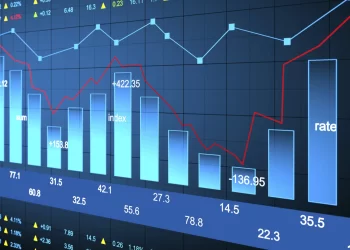Stock options, stock futures, and stock index futures are all types of derivatives that are traded on an exchange. Each type of option or future has its own unique risk profile and trading strategy. When you trade stock options, you have the right but not the obligation to buy or sell shares of a company’s stock at a specific price (strike price) by a predetermined date. With stock futures contracts, you agree to purchase or sell shares of company stocks at a locked-in price on a set date in the future.
With their fixed expiration dates and standard contract sizes, both stock options and stock index futures are considered risk-neutral strategies that aren’t as volatile as typical stocks. The strategies for trading each type of derivative differ slightly because each requires a different approach. Here is some insight into how you can trade stock market derivatives like a pro so that whether the market goes up or down, your profit potential is always positive.
Guides about Stock Futures
What is a Stock Future?
A stock future is a contract to buy shares of a company’s stock at a set price (expiration date) in the future. If the stock’s price rises, you can sell the future at a higher price. If the stock’s price falls, you can buy the future at a lower price. For example, say you think the stock market will drop in the next three months. You could buy a stock future contract to buy 100 shares of the S&P 500 at 2,900 by September 30th.
If the S&P 500’s price falls from 2,900 to 2,600 between now and September 30th, you could sell the future at 2,600 per share when it expires and make a profit of $300 per share or $30,000 in total profit. If the price of the S&P 500 does not fall below 2,900 by September 30th, you have to buy 100 shares at 2,900 per share. But this is a smart move because the market is expected to rise in the near future and you can then sell the shares for more than you bought them for. When trading stock futures, you have unlimited risk because you will have to buy the stock at whatever price it is trading at when the contract expires, even if it is a huge amount.
Stock market futures are contracts that allow you to buy or sell the price of a stock at a pre-determined price on a specific date. If you’re bullish on the future of a particular stock, you can buy its stock market futures contract with the intention of reselling it at a higher price later. If you think the stock will fall in value, you can sell its futures contract with the expectation that you’ll buy it back at a lower price. These products are similar to call options and put options found in the world of equity investing but with some key differences. Readers should note that this article is an introduction to stock market futures, not an exhaustive list of their pros and cons. To learn more about these complex financial instruments, continue reading for useful insights from industry experts.
What’s the difference between a stock and a stock market future?
Stocks are shares in companies that make up the stock market. The price of a stock fluctuates throughout the day based on a number of factors including the company’s performance, the health of the economy and investor sentiment. A stock market future is a contract between two parties to exchange the price of a stock at a specific time in the future. Stock market futures fall under the category of derivatives, meaning they derive their value from something else. The price of stock futures is based on the price of the underlying stock. This means the value of a stock market future will change with the price of the stock. When trading stock market futures, it’s important to keep in mind that the price of the underlying stock is the price at the end of the trading day. This is different than the regular stock price that you see on financial news websites.
How to buy stock market futures
When you buy a stock market future, you purchase the right to exchange the price of one stock for another at a specific time in the future. At the time of the exchange, there are three things you must do: If the price of the underlying stock has decreased, you must buy the future at the higher price and sell the underlying stock at the lower price. This means you must buy the underlying stock at a higher price than the future contract and sell the future at a lower price. If the price of the underlying stock has increased, you must sell the future at the higher price and buy the underlying stock at the lower price. This means you must sell the future at a lower price than the underlying stock and buy the future at a higher price.
Investing with stock market futures
A stock market future can be a lucrative way to profit from a rising or falling stock price. When trading futures, you can use a combination of two strategies to profit from a stock’s movement.
The first strategy is called a “contango trade.” This strategy is used when you expect the price of the underlying stock to rise. When you are long the future, you profit as the underlying stock price rises and the future’s price remains the same. You can take advantage of this price difference by closing out your future position before the contract expires.
The second strategy is called a “backwardation trade.” This strategy is used when you expect the price of the underlying stock to fall. When you are short the future, you profit as the underlying stock price falls and the future’s price remains the same. You can take advantage of this by closing out your future position before the contract expires.
Stock market futures risks
Like any type of investment, futures come with their fair share of risks. If a stock experiences a sharp rise in price, you could find that you’re unable to profit from it if you’re short the stock market future. Similarly, if a stock price experiences a sharp decline, you could find that you’re unable to avoid losses if you’re long the future. Futures are leveraged instruments, meaning they are designed to multiply gains or losses. This means that if you’re trading a stock futures contract worth $100,000 and the underlying stock experiences a 10% decline, you will lose $10,000. In addition, many futures contracts have daily margin requirements that can increase the risk of losses.
Trade Stocks with Options
When you buy a call option on a company’s stock, you are paying a upfront premium to obtain the right to purchase that stock at a set price (strike price) by a predetermined date. For example, say you think Microsoft’s stock price will rise over the next month. You could buy a call option that gives you the right to purchase 100 shares of Microsoft at $75 per share by August 15th.
If the stock’s price rises to $100 by August 15th, you can buy 100 shares for $100 per share and then sell them for $200 per share, making you an instant profit of $100 per share or $10,000 in total profit. If the stock’s price falls to $50 by August 15th, you can just let the option expire because you would be buying 100 shares at $75 per share when the current market price is $50 per share, making it a losing trade. With call options, you have limited risk because you only have to pay the initial premium if the stock price falls below the strike price by the expiration date.
Trade Stocks with Index Futures
When you trade stock index futures, you agree to purchase shares of a stock index such as the S&P 500 at a specific price (expiration date) in the future. For example, in US Stock Futures, say you think the S&P 500’s price will fall significantly by the end of the year. You could buy a stock index futures contract that gives you the right to buy 100 shares of the S&P 500 at 2,900 by December 31st.
If the S&P 500’s price falls to 2,100 by December 31st, you could sell the futures at 2,900 per share when it expires and make a profit of $800 per share or $80,000 in total profit. If the S&P 500’s price does not fall below 2,900 per share by December 31st, you have to buy 100 shares at 2,900 per share. But this is a smart move because the stock market will likely rise in the near future and you can then sell the shares for more than you bought them for.
Conclusion
The stock market can be a lucrative place for traders, but only if they know what they’re doing. All of these strategies can be highly profitable, but only if you have the knowledge and experience to employ them properly. When you trade stock market derivatives like a pro, whether the market goes up or down, your profit potential is always positive.
There are many benefits to trading futures, but it’s important to do your research and understand the risks associated with these complex financial instruments. Always make sure you have a trading plan in place before you begin trading futures and stick to your strategy. This will help you avoid making impulsive decisions that could lead to significant losses.






